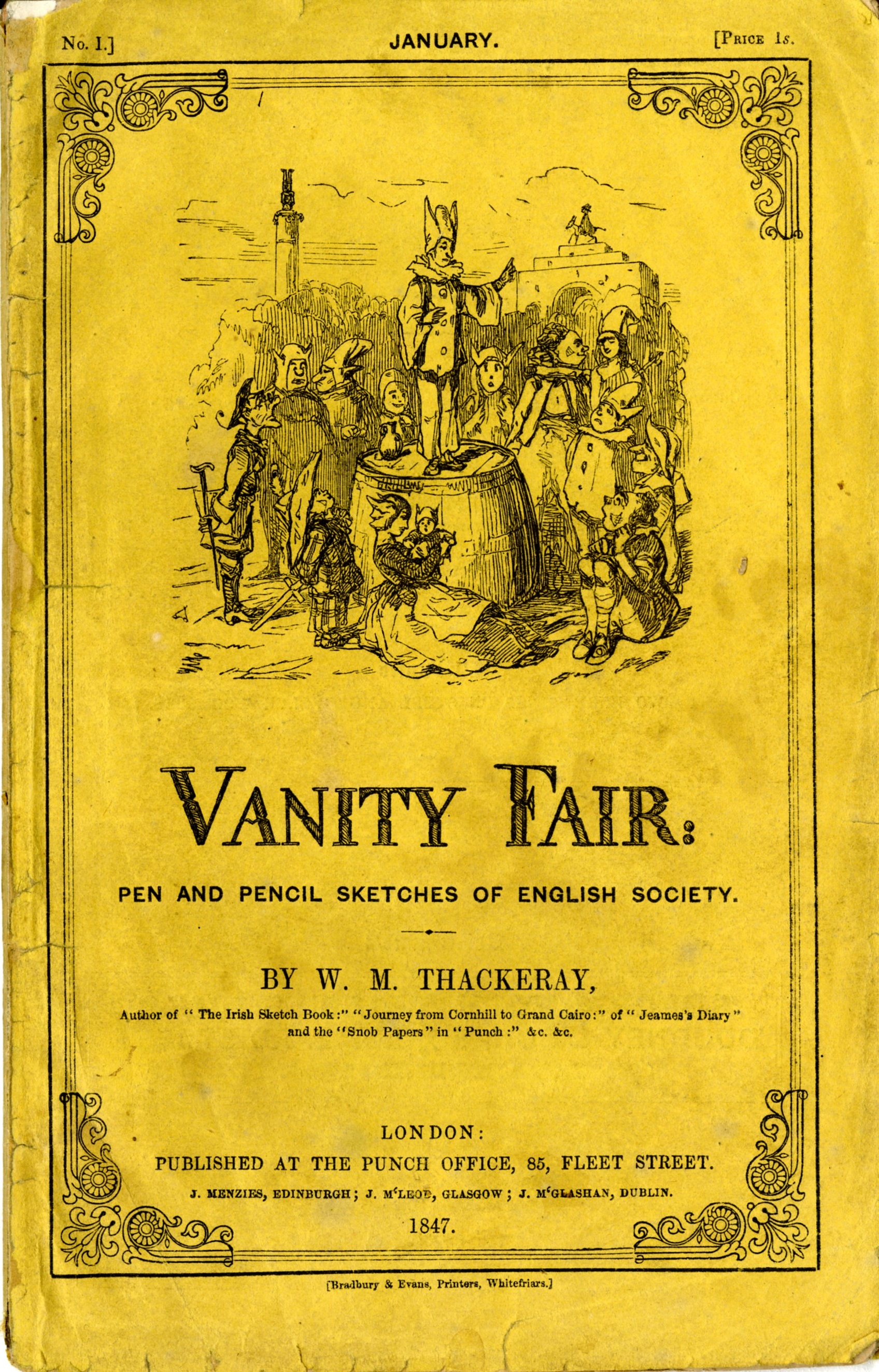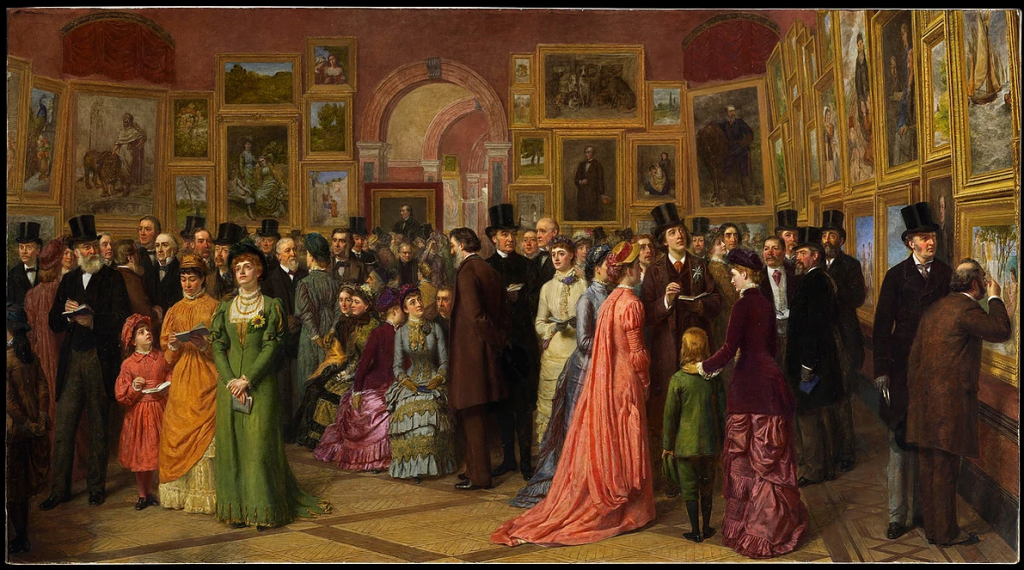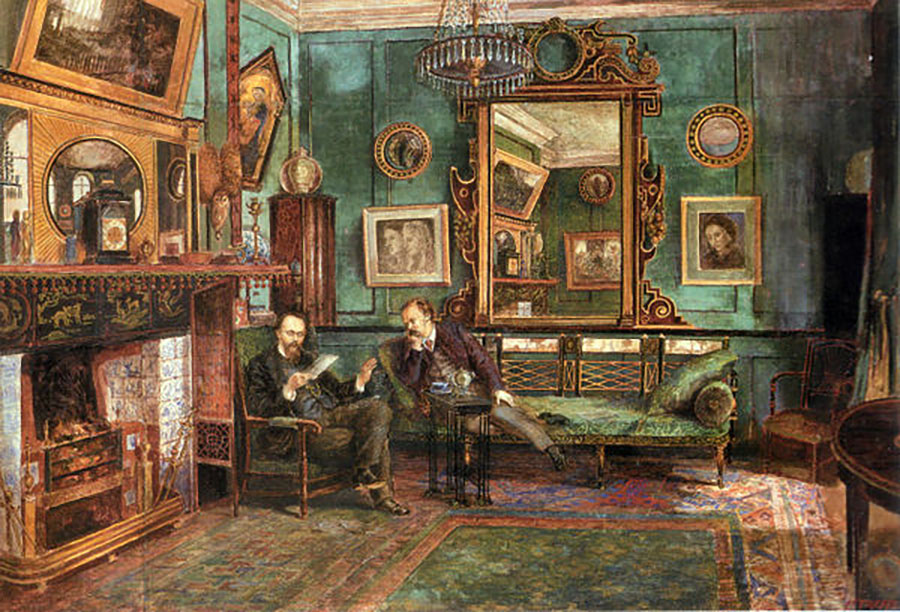The structure of Thackeray's monumental Vanity Fair is far more complicated than Austen's Pride and Prejudice. This timeline contains dates and events that will help us to navigate the novel, which is set in the Regency era but written during the Victorian period. Review this timeline as you read the novel. I invite you to add to this timeline as well. 
The Nineteenth-Century British Novel, EN 316R, Fall 2021 Dashboard
Description
An analysis of the novel over the long nineteenth century with attention to illustrations and objects--A Private View at the Royal Academy, William Powell Frith, 1881

Angels, fallen women, eccentrics, and aspiring heroes and heroines populate our study of the nineteenth-century British novel. This era of production and consumption witnessed rapid change in industry, communications, religion, education, and gender roles. We will consider the "woman question" and preoccupations with death, the pastoral, and the domestic family circle in novels by Jane Austen, William Makepeace Thackeray, Elizabeth Gaskell, Charles Dickens, George Eliot, and Thomas Hardy. Adopting a material cultural studies focus, we will examine material objects (e.g. a valentine, a writing desk) and events and places (e.g. The Battle of Waterloo, Stonehenge) that impact plot and characterization. To deepen our study of the long nineteenth century, students will research an object, place, or event and then present it first as a Power Point and oral presentation and subsequently as a case for a virtual gallery to be housed on the Collaborative Organization for Virtual Education (COVE). Be advised: this course is reading intensive. Two of the books are “multi-plot” novels close to 900 pages long, but filled with exciting plot twists, complex characterization, and satisfying endings. In addition to the PPT and gallery case, students will write four two-page papers called briefs. The course will culminate in a 10-12-page research paper on three works. Students must be prepared to read critically, participate actively, research deeply, and write analytically.
Galleries, Timelines, and Maps

Henry Treffey Dunn, Dante Gabriel Rossetti and his Friend Theodore Watts-Dunton at Rossetti's home in Cheyne Walk, 1882, National Portrait Gallery .
Material objects and historical events and places incorporated into the nineteenth-century British novel position the genre in a cultural moment. Our gallery includes objects, events, or places of importance to novels by William Thackeray, Elizabeth Gaskell, Charles Dickens, George Eliot, and Thomas Hardy. Victorian material objects--such as those on display in Rossetti's Cheyne Walk home in Chelsea in this 1882 painting by... more
